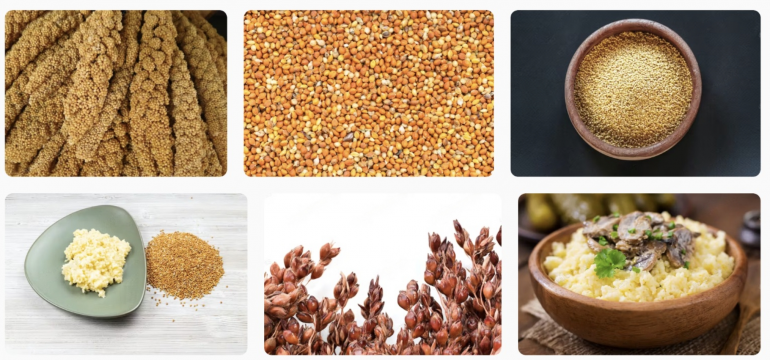Millets, often overshadowed by more familiar grains like wheat and rice, hold profound significance in global agricultural and culinary history. This humble yet resilient cereal, cultivated for millennia across diverse cultures, has silently nourished civilizations, enriched diets, and contributed to ecological sustainability. As we dive into the world of millet, we uncover its historical significance, nutritional prowess, and its pivotal role in addressing contemporary global challenges like food security, quality nutrition, and climate change. This led to receiving support from 72 countries in the United Nations General Assembly to celebrate the International Year of Millets in 2023.The government of India’s commitment to put Millets ‘Shree Anna’ on every plate is certainly applause-worthy and a perfect way to commemorate the international year of Millet.
These century-old grains are now gaining prominence as a smart and sustainable choice of crops that not only provides nutrition but also food, feed, and fodder security to the nation. Being nutritionally superior to Rice and Wheat, high in dietary fiber, and low in glycemic index, Millets are all set to tackle the nutritional challenges and lifestyle problems at the consumers’ end. On the other hand, the low carbon and water footprint, climate resilience nature and ability to grown in adverse conditions with less investment makes it a favored crop among farmers. Cultivation of high-yielding short-duration varieties reduces the risk for farmers and safeguards them from the risk of erratic monsoon rainfall. This makes millets the best choice for both consumers and farmers alike.
India proudly holds the mantle as the world’s leading millet producer, contributing a remarkable 41% to the total global production and a staggering 80% of Asia’s output. This presents a great opportunity for millets to emerge as a crop of choice for the global population. We foresee rising market demand for millets globally due to their health benefits which have generated renewed interest among consumers. India can indeed emerge as a ‘Millet bowl’ and lead the world as a key player in the global supply chain. Achieving this vision will require significant efforts to empower smallholder Indian millet farmers with agricultural inputs, technologies, and linkages that enable them to increase their yields and incomes.
In a nutshell, enhancing the production of millets through productivity-led growth is of paramount importance. This calls for providing improved, high-yielding seeds to farmers and improving the seed replacement rate of millets. Spreading awareness about good agriculture practices by undertaking frontline demonstrations is vital. Improvement in varieties, breeding for disease resistance, and low rancidity for better shelf life are a few crucial areas for research and development in millet. Stakeholder-driven meticulous planning at the state level will prepare India to build a brand India as the Millet Bowl of the world.
Over the last year, the FICCI Task Force on Millets with a representation of members from each segment of the millet value chain and a vision “to facilitate impactful partnership to make Indian millets value chain more remunerative to farmers, beneficial to consumers, efficient and globally competitive’ have taken several initiatives at center and state level that aligns with Government’s Millet mission and Hon’ble Prime Minister’s vision of India’s responsibilities towards the global good.
As we embrace millets, we cultivate a healthier future for all: a resilient, sustainable, and nourishing path forward for generations to come.
The author is Chairman, FICCI Task Force on Millets & Director, Seeds sales, South Asia, Corteva Agriscience





